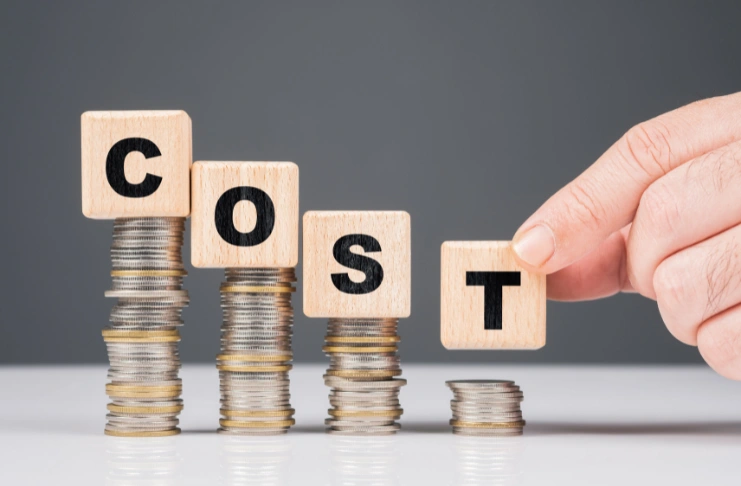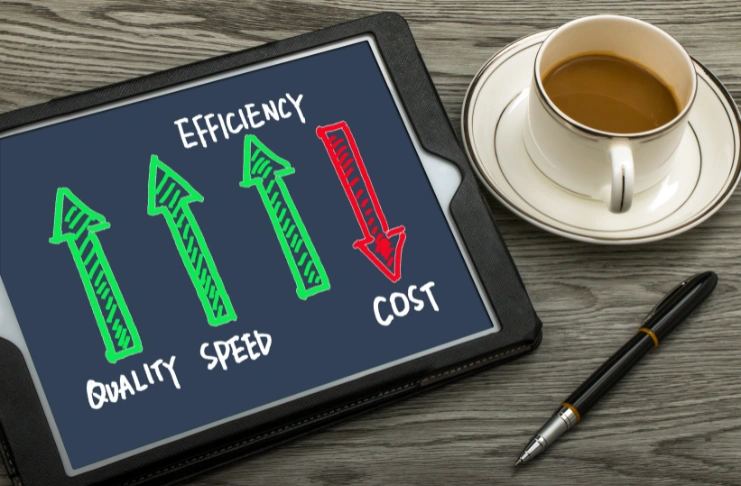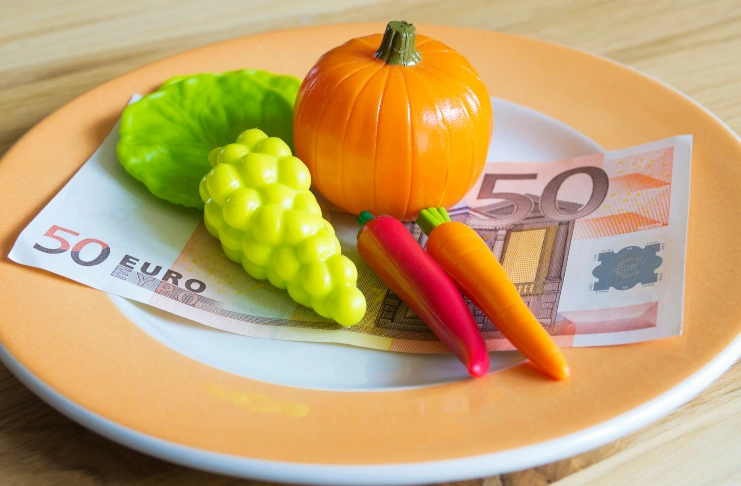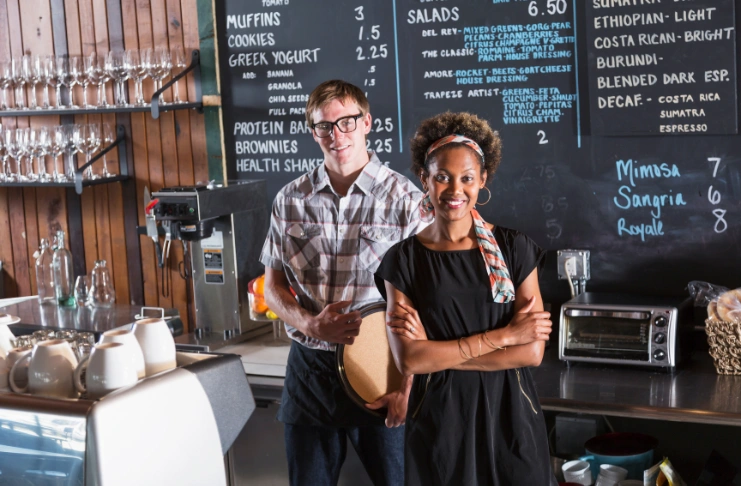In the restaurant business, profitability is increasingly tied to one critical function: control, specifically food and beverage (F&B) control.
Margins are thin, often between 3% and 5% for full-service restaurants, and operational costs continue to climb across labor, supply chain, and overhead. In such a condition, even minor inefficiencies can erode what little profit remains, which is why implementing cost-cutting measures is crucial. That’s why F&B control isn’t just a back-of-house task. It’s a strategic lever directly impacting how much money stays in the business.
The goal of F&B control is simple: to monitor and manage all activities related to the purchase, storage, preparation, and sale of food and drinks, including tracking inventory . It gives operators real-time visibility into costs, inventory levels, waste patterns, and pricing accuracy when done right. But when neglected, it leads to spoilage, theft, over-ordering, portion distortion, and thousands lost to guesswork.
This guide breaks down what F&B control really means for you and your business. Stay rooted.
What is F&B Control in Restaurants?

F&B control refers to the systems and processes restaurants use to manage the total cost, quality, and flow of food and beverage ingredients throughout the operation. It spans every stage of the product lifecycle: from purchasing and receiving to storage, preparation, sale, and waste.
In practice, that means tracking what comes in, what’s used, what’s sold, and what’s left over.
For full-service restaurants, F&B control often includes advanced tools like POS integrations, kitchen display systems, and vendor management dashboards. For smaller operations, even basic Excel-based tracking can reveal critical inefficiencies.
The key is consistency. F&B control is not a one-time audit or monthly review. It’s a daily discipline. When treated as such, it creates a measurable impact on revenue, waste reduction, and customer satisfaction.
Understanding the F&B Cost Structure

Effective cost control starts with understanding your restaurant’s cost structure. Typically, food costs take up 28-32% of revenue, while beverage costs range from 18-24%. Labor costs are another major expense, accounting for about 25-35% of revenue, depending on your service style and location.
Prime cost—the combined total of food, beverage, and labor—is the most important financial health indicator for restaurant operations.
Most industry leaders keep prime cost percentages between 55% and 65% of total sales to ensure healthy profit margins. This benchmark provides a key reference point for measuring operational efficiency across different restaurant types.
The Impact of Uncontrolled Costs on Profitability
When food and beverage costs operate without proper controls, profits quickly erode through many small inefficiencies that add up over time.
A seemingly small 2% increase in food cost percentage can reduce annual profits by $20,000-$50,000 for a mid-sized restaurant. Similarly, unaddressed beverage control issues often result in 15-20% revenue loss through overpours, theft, or waste.
Beyond direct financial effects, too much inventory ties up valuable cash that could otherwise support marketing efforts, facility improvements, or staff training. Such costs often remain hidden until proper cost control systems reveal the true financial impact of poor inventory management practices.
Measuring Food Cost Percentage

Food cost percentage serves as the main indicator of kitchen efficiency. It is calculated using this formula:
Food Cost Percentage = (Beginning Inventory + Purchases – Ending Inventory) ÷ Food Sales × 100
Industry standards vary by restaurant type.
Higher-end restaurants with premium ingredients may operate efficiently in the 30%-40% range. In contrast, quick-service restaurants typically aim for between 25% and 35% to maintain appropriate profit margins based on their volume-driven business model.
Inventory Management
A well-designed inventory system tracks all products from purchase through production, allowing managers to identify usage patterns and address problems before they hurt profitability.
Successful implementation starts with establishing regular inventory counting schedules, with frequency based on item value and turnover rate. High-value items typically need weekly counts, while stable dry goods may require less frequent checking.
Equally important is developing standard counting procedures that reduce human error and ensure consistency when staff changes. This standardization must include clear responsibility assignments and secure storage areas with properly limited access.
Digital vs. Manual Inventory Tracking Methods
While manual tracking systems work for smaller operations with limited product counts, inventory management software delivers much greater accuracy and analysis capability for most restaurants.
Modern point-of-sale systems include advanced inventory features that automatically update stock levels with each sale, calculate real-time food cost percentage, identify items nearing reorder points, and create purchase orders based on past usage patterns.
Preventing Inventory Shrinkage and Loss
Inventory shrinkage (the measurable product loss between purchase and sale) impacts food and beverage costs across all restaurant types.
Industry analysis shows employee theft accounts for approximately 42% of inventory shrinkage, with improper portioning, storage problems, and counting errors making up the remaining difference.
Effective prevention strategies include implementing cycle counting methods, conducting surprise audits, and using strategic security systems in storage areas. Cross-training staff on inventory procedures further increases accountability while ensuring continuity during staff changes.
Most importantly, creating a culture that emphasizes inventory accuracy as a shared responsibility rather than a punishment improves compliance and reduces loss across all operational areas.
Food Cost Control Strategies for Restaurants

Below are proven food cost control strategies that help restaurants preserve margins, reduce waste, and make smarter operational decisions.
Menu Engineering for Profit Optimization
Menu engineering is one of the most effective tools for controlling food costs while maximizing profitability. This approach examines menu performance through the dual lenses of profit margin and item popularity, categorizing offerings into four strategic groups: Stars (high profitability, high popularity), Plow Horses (lower profitability, high popularity), Puzzles (high profitability, lower popularity), and Dogs (lower profitability, lower popularity).
It helps restaurant managers make evidence-based decisions regarding menu layout, promotional focus, recipe modification, and product elimination.
By understanding the performance metrics behind each menu item, restaurants can strategically highlight high-margin offerings while fixing underperforming items through recipe adjustments, portion changes, or pricing revisions.
Standardized Recipes: Consistency is Key
Standardized recipes form the foundation of consistent portion control, quality assurance, and accurate food cost calculation. Complete recipe documentation must include precise ingredient quantities, detailed preparation methods, specific cooking parameters, and standardized plating instructions.
This level of detail ensures consistent guest experiences while maintaining predetermined cost structures regardless of which staff member prepares the item.
Reducing Food Waste Through Smart Practices
Food waste directly impacts food cost percentage and creates environmental concerns that increasingly matter to consumers.
Leading restaurants use proactive strategies such as:
- Training staff on proper storage techniques to prevent spoilage
- Using First-In-First-Out (FIFO) inventory management to ensure older ingredients are used first
- Repurposing excess ingredients through daily specials to minimize waste
- Tracking waste data to identify problem areas and make informed changes
- Adjusting portion sizes based on plate returns to prevent unnecessary food loss
The financial benefits of these practices are huge.
INDUSTRY INSIGHT
| Research shows that restaurants that actively invest in food waste reduction programs generate an average of $7 in savings for every $1 spent. Within just 12 months, food waste drops by 26%, and over 75% of operators recoup their full investment, making it one of the best cost-saving strategies in the F&B industry. |
Beverage Control

Beverage control needs special attention because it is vulnerable to theft and offers high profit potential. Rather than relying on visual estimates, managers must conduct regular bar inventories using precise measurement systems. This quantitative approach helps track pour costs for signature cocktails and high-volume spirits and highlights patterns that may signal recurring issues.
Tracking bartender efficiency also provides insight into both service speed and cost control. Restaurants that use standardized cocktail recipes deliver a consistent guest experience and maintain predictable beverage costs across different staff members and shifts.
Wine Program Management and Pricing Strategies
Wine programs are a significant profit center but require sophisticated inventory management. Wine is more delicate than other beverages, with issues like product fragility and variable shelf life.
Successful operations use tiered markup strategies: applying higher percentage margins to lower-cost bottles and lower percentage (but higher dollar) margins on premium selections. This keeps the wine program competitive while maximizing profit.
Staff training on proper storage and service protocols also protects your inventory investment and bolsters guest perceptions of value. Strategic inventory rotation is key to preventing spoilage and ensuring consistent product quality.
Plus, it is critical to balance selection variety with quick turnover for by-the-glass programs, reducing the risks of oxidation and quality degradation that can hurt both profitability and guest satisfaction.
Controlling Draft Beer Systems and Minimizing Loss
Draft beer systems pose unique challenges because they involve specialized equipment and multiple stages where loss can occur. Common issues include improper pouring techniques that produce too much foam, inconsistent portioning, equipment maintenance lapses, and significant product loss during line cleaning.
Advanced restaurants use draft beer monitoring systems to prevent these issues. These systems measure every ounce poured versus sold, creating clear accountability and helping managers identify loss patterns.
Investment in this technology often pays off within six months while enhancing product consistency and quality.
Labor Cost Management in the F&B Industry

Labor is typically the second-largest expense in a restaurant. Historical sales data can help manage these costs effectively and predict busy periods.
Develop modular schedules that flex with customer demand, implement split shifts during transitional periods, and invest in cross-training so staff members can handle multiple roles. These strategies not only control costs but also improve operational agility.
Technology Solutions for Labor Efficiency
Modern technology can be crucial in managing labor costs without compromising service quality. All valuable tools include integrated POS systems with labor management features, automated employee scheduling software that factors in sales forecasts, and self-ordering kiosks to reduce front-of-house staffing.
Kitchen display systems further enhance efficiency at the cook line by streamlining orders and reducing errors.
Balancing Service Quality with Cost Control
While labor costs must be managed, overcutting can jeopardize customer satisfaction. Set clear service standards and staff accordingly. Regular training improves efficiency, and well-designed incentive systems reward productivity.
Monitor the impact of staffing levels on customer satisfaction so that you strike the right balance between cost control and service excellence.
Vendor Management and Purchasing Strategies

Vendor relationships directly impact cost control. Consolidating orders with fewer suppliers can unlock volume discounts and simplify delivery schedules. Negotiate terms that favor cash flow and ensure product quality through written standards, consistent inspections, and analysis of historical data.
Strategic Ordering to Minimize Inventory Costs
Avoid tying up cash in excess stock. Determine par levels based on sales velocity, establish economic order quantities, and plan deliveries that balance cost with freshness. Monitor seasonal price swings and align purchasing cycles to capitalize on dips.
Quality Control in the Receiving Process
Losses often occur before inventory hits the shelves. Train receiving staff to inspect deliveries thoroughly, checking quantity, quality, and temperature. Match receipts to purchase orders line-by-line and reject items that fall short of standards.
Mind that investing in your receiving process protects margins from day one.
Leveraging Technology for F&B Cost Control

Modern point-of-sale systems are the central nervous system for restaurant cost control. These advanced platforms track sales data at the item level, providing essential information for menu engineering and performance analysis.
Integration with inventory management modules automatically adjusts stock levels as items sell, eliminating manual reconciliation needs while providing real-time visibility into theoretical versus actual food cost percentage.
Advanced systems monitor individual server and bartender performance metrics, identifying training opportunities and potential loss prevention issues across specific shifts and service periods.
This creates unified data environments that connect guest preferences, operational efficiency, and financial performance and drive continuous improvement across all business areas.
Inventory Management Software Solutions
Dedicated inventory management platforms enhance control capabilities beyond basic POS functionality, offering specialized features designed for food and beverage operations. These systems automate purchase order creation based on predetermined par levels and current sales velocity, significantly reducing stockouts and overordering.
Multi-location tracking features provide visibility across storage areas, while variance reporting tools highlight discrepancies requiring immediate investigation.
Recipe costing and menu analysis modules enable management to evaluate menu profitability with unprecedented accuracy.
Data Analytics for Cost Optimization
Advanced analytics transforms raw inventory and sales data into insights that drive continuous improvement cycles. By identifying sales trends across periods, management can adjust purchasing quantities and production schedules to match demand patterns.
Seasonal analysis further enables menu optimization that aligns with changing customer preferences while maximizing ingredient utilization and minimizing waste.
Anomaly detection tools identify unusual patterns that might indicate theft, waste, or procedural failures that require investigation. Most significantly, predictive modeling capabilities allow increasingly accurate forecasting that reduces overproduction and stockouts—dual challenges that have traditionally plagued food and beverage operations.
Creating a Culture of Cost Consciousness

Effective cost control goes beyond systems and procedures. It requires developing an organizational culture where every team member understands the financial impact of their actions.
Comprehensive staff training programs should educate teams about how waste affects restaurant financial health while providing specific techniques to minimize unnecessary costs. This will prove far more effective than punitive measures focused solely on rule enforcement.
By involving staff in identifying cost-saving opportunities, management gains valuable operational insights while simultaneously increasing employee investment in financial outcomes.
Training programs that include proper portioning techniques, appropriate preparation methods to maximize yield, and correct storage procedures to extend product shelf life generate immediate returns through reduced waste and enhanced product utilization.
Incentive Programs for Cost Reduction
Well-designed incentive structures motivate teams to actively participate in cost control initiatives by aligning individual interests with organizational objectives.
Progressive restaurants share food cost percentage improvements through strategically structured bonus programs that reward sustained performance improvement. These programs often recognize individuals who identify specific waste reduction opportunities while creating friendly competition between shifts or stations to enhance engagement.
Department-specific reward systems that celebrate cost target achievement create positive reinforcement while maintaining focus on critical metrics.
Importantly, these programs must balance cost control with quality maintenance to prevent counterproductive behavior, such as sacrificing guest experience for short-term financial gain.
Communication Strategies for Team Alignment
Regular communication reinforces cost control priorities while keeping performance metrics visible throughout the outlet.
Skilled managers incorporate key cost metrics into daily pre-shift meetings, creating continuous awareness of performance against targets. Weekly performance results posted in staff areas maintain focus between meetings while providing recognition for teams achieving established goals.
Most importantly, celebrating achievements when teams meet or exceed cost reduction targets reinforces the positive aspects of cost management rather than focusing exclusively on shortfalls.
Conclusion
The most successful operations view food and beverage control not as a one-time initiative but as an ongoing refinement and optimization process. By continuously analyzing data, adjusting procedures, and adapting to changing market conditions, restaurants can build sustainable profitability even in challenging economic environments.
Remember that effective F&B control balances financial objectives with customer satisfaction. The ultimate goal is not simply to reduce costs but to optimize the entire operation for maximum efficiency while delivering exceptional value to guests.
Frequently Asked Questions
1. What is F&B control?
F&B control encompasses all processes and systems used to monitor and manage food and beverage costs in a restaurant, including inventory management, portion control, purchasing practices, and financial analysis to ensure profitability while maintaining quality.
2. How do you manage a F&B?
Managing F&B operations involves overseeing purchasing, inventory, production, and service while controlling costs and maximizing revenue. This requires implementing standard operating procedures, training staff, monitoring financial performance, and continuously optimizing operations.
3. What is the control process in food and beverage?
The control process in food and beverage involves planning (setting standards and budgets), implementation (following procedures), monitoring (tracking performance), and corrective action (addressing variances). This cycle repeats continuously to maintain operational efficiency.
4. What is cost control in F&B service?
Cost control in F&B service refers to the systematic approach of managing and minimizing expenses related to food, beverages, labor, and overhead while maintaining quality standards to ensure profitability.
5. What is a F&B cost controller?
An F&B cost controller is a specialized position responsible for monitoring and managing all costs related to food and beverage operations, including inventory management, purchasing, recipe costing, and financial analysis to optimize profitability.
6. How can I control my food cost?
You can control food costs by implementing standardized recipes, conducting regular inventory counts, training staff on proper portioning, reducing waste, negotiating with suppliers, engineering your menu, and analyzing sales data to make informed purchasing decisions.
7. What is the control system in food and beverage?
A control system in food and beverage is an integrated set of processes and procedures designed to monitor and manage all aspects of cost and quality, including purchasing, receiving, storage, production, service, and sales analysis.
8. What is portion control in food and beverage control?
Portion control ensures consistent serving sizes according to standardized recipes, helping maintain food cost percentages, ensure customer satisfaction, and prevent waste. It involves using measuring tools, training staff, and monitoring plate presentation.
9. How do restaurants manage their inventory?
Restaurants manage inventory through regular counting, tracking usage against sales, establishing par levels, implementing first-in-first-out rotation, using inventory management software, and analyzing data to optimize ordering and minimize waste.
10. What are the 4 types of inventory management systems?
The four main types of inventory management systems are:
1) Manual systems using paper records
2) Spreadsheet-based systems
3) Basic inventory software
4) Integrated inventory management systems that connect with POS, purchasing, and accounting.
11. What is the inventory method for restaurants?
Restaurants manage inventory through regular counting, tracking usage against sales, establishing par levels, implementing first-in, first-out rotation, using inventory management software, and analyzing data to optimize ordering and minimize waste.
12. What are the 5 stages of the inventory management process?
The five stages of inventory management include:
1) Purchasing based on demand forecasts
2) Receiving and quality control
3) Storage and organization
4) Usage tracking and production
5) Analysis and optimization based on performance data.





